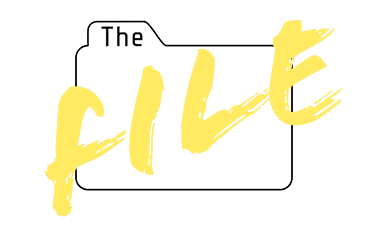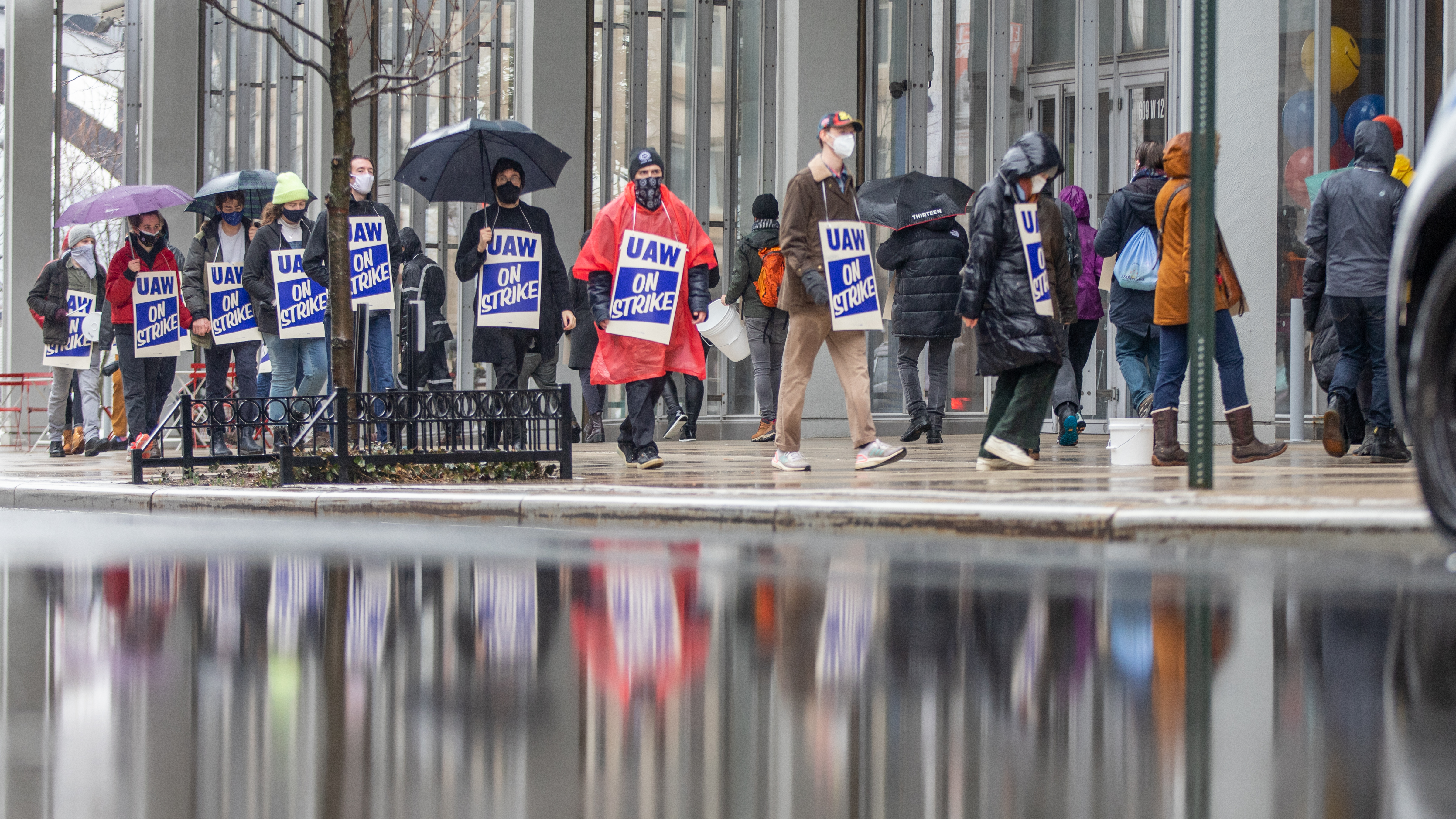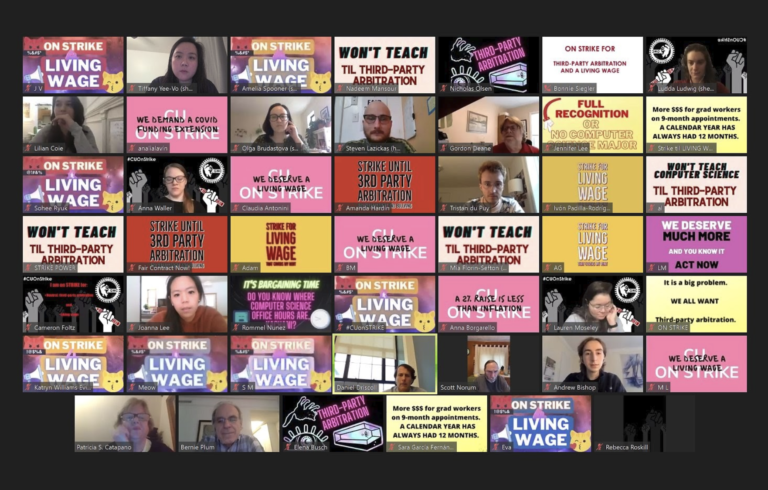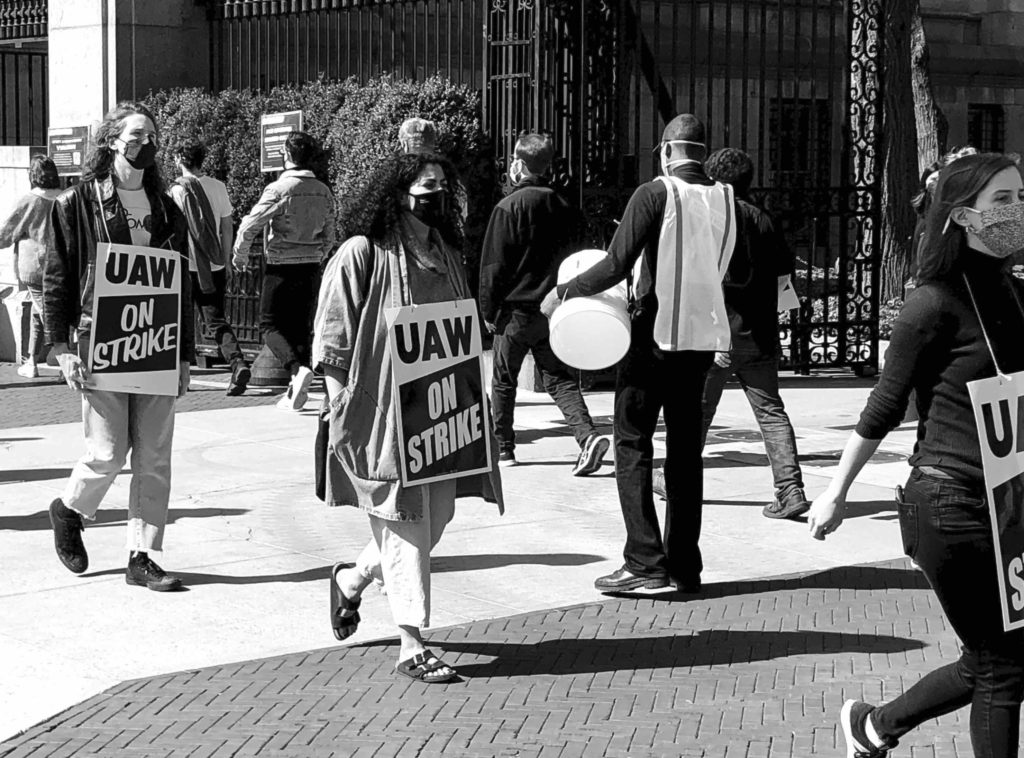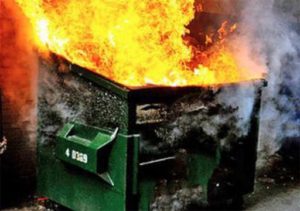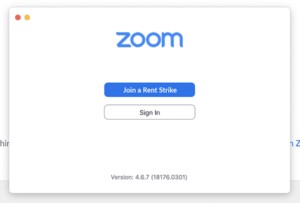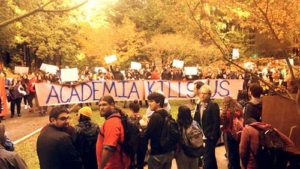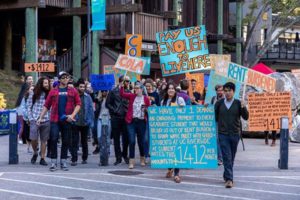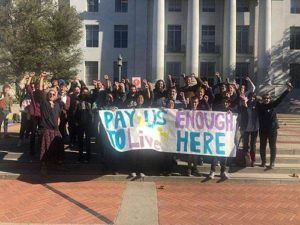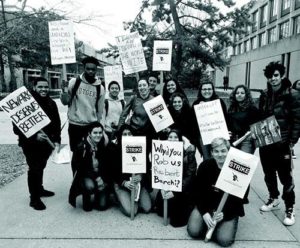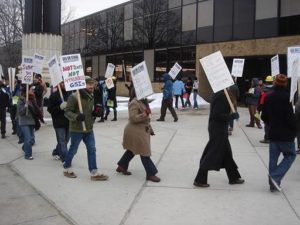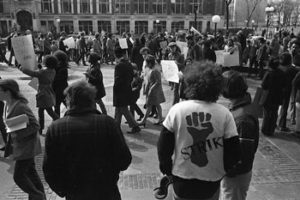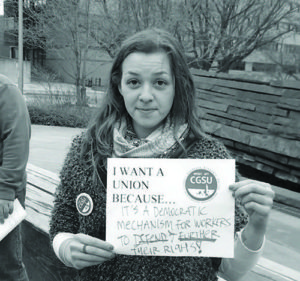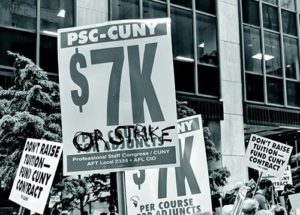On March 15, 2021, Columbia graduate workers, represented by the Graduate Workers of Columbia-United Auto Workers (GWC-UAW), went on strike for recognition of the full unit and a decent contract, adequate to the conditions of graduate workers in New York. This action comes in the wake of both Columbia graduates’ Spring 2020 labor and rent strike – organized without official support from the union – and Columbia undergraduates’ ongoing tuition strike.
Much of the organizing for both the current strike and the Spring 2020 strike has come from Columbia’s rank and file union caucus, Columbia Academic Workers for a Democratic Union (C-AWDU). Formed in 2018 as a counterpower to business unionist tendencies in leadership, C-AWDU have since worked to build rank and file power through a robust political strategy, expanding beyond contract cycles and into lasting shopfloor organization and tenant struggles.
Four University of California graduate workers – who themselves went out on wildcat grading and teaching strikes in 2019-2020, and are now members of the Rank and File Action (RAFA-UC) caucus in the UC Student Workers’ Union (UAW-2865) – talked to Columbia strikers, including C-AWDU members, to get a frank assessment of the dynamics at play, and some of the prehistory, of this ongoing, important strike.
UC’s Tony Boardman, Yulia Gilich, Shannon Ikebe, and Stefan Yong were in conversation with Columbia’s Iuri Bauler, Lilian Coie, Joanna Lee, Tristan du Puy, and David Silverberg.
“Striking works”: Leading Up to the Strike
Yulia, RAFA-UC: How is everyone doing? How does it feel to be on strike?
Tristan, C-AWDU: [To be on strike] is really energizing.
Joanna, C-AWDU: The strike is incredible. We’ve done so much organizing in pandemic conditions, and I’m amazed by the turnout. We have 800 people at [both in-person and digital] pickets, which is incredible, considering all the concerns around time differences, pandemic safety – all that stuff. It’s making the administration nervous, and that comes through in the way they’ve been even more aggressive, posturing more than they usually have. It’s showing that striking works; striking has an impact.
Lilian, C-AWDU: We’ve been working on this contract for a really long time, but now, with the strike, things have really heated up – more and more people are getting involved, showing up to bargaining in numbers we haven’t seen before.
Iuri, C-AWDU: For me, as a rank and file member, with no involvement in BC [Bargaining Committee] debates, endless debates … it’s wonderful! The energy of the strike is great.
Tony, RAFA-UC: Can you quickly say something about what the in-person pickets look like?
Joanna, C-AWDU: Yeah, they’re classic pickets, socially distanced with masks on, with chanting, walking around. For virtual pickets, one of the things that has been effective, is that we do phone zaps and email zaps during the virtual pickets. So I think within the first hour of the first day of the strike, we filled their inboxes within the first hour, so all these key administrators weren’t able to receive further emails for the rest of the day.
We’re also working with the Teamsters to turn away deliveries to Columbia. In-person delivery stoppages is huge leverage because Columbia needs their, you know, multi-thousand dollar equipment to come through.
Yulia, RAFA-UC: Amazing. We’ve been told by Harvard comrades that the next is trash. If you get sanitation workers who pick up trash from campus to strike in solidarity, then within days, that’s it! Admin is going to say: take whatever you need, just make it stop.
“We already organized ourselves”: Rank and File Organizing and the UAW
Shannon, RAFA-UC: I was wondering if you could talk a bit about the historical context of your caucus, C-AWDU, and what led up to this point. How did C-AWDU develop its strategy and organizing capacity? What have been the major reasons that got you to strike?
Iuri, C-AWDU: The current debates within the union were shaped – it’s kind of unspoken, but it’s very important – by the strike that happened in April 2020. There was a big section of the union that believed that that was the moment, and that [striking] was a necessity, because we were seeing [with the start of the pandemic] people not being able to afford an apartment, getting evicted from their houses, etc. And Columbia was very slow to react. I think that was a very important moment for a number of departments who were like, “okay, we’re going to strike and, if the Bargaining Committee wants otherwise, we can pressure them to join us.”
My department basically organizes itself now, during this strike, because we already organized ourselves. At the same time, a lot of illusions were shed – we don’t trust in our faculty nowadays! It was a very galvanizing moment, but also very divisive. But that strike, for some departments, created a structure of organizing that does not depend that much on the official organizers, on the union model.
Tristan, C-AWDU: I feel like this is the strike that would have happened before – we went on strike, but were completely blocked by the bargaining framework. And we wanted the strike to happen last year, but COVID hit. And so there was a Spring [2020] strike which UAW opposed – the Bargaining Committee at the time voted against it. After that, we took eight, nine months this year to make it happen, and also reduce the scope of articles that were on the table to make it more efficient – there was a lot of pressure from UAW to close most of the contract issues pre-strike in order to have more targeted asks while on strike. An international workers’ rights article was closed early, for example, in order to narrow the scope of disagreements with Columbia’s admin.
Joanna, C-AWDU: I can tie this into the broader history of C-AWDU and how we’ve been organizing. The whole idea of rank and file organizing is that it’s bottom up, it’s worker-led, right? And what we saw with the 2018 bargaining framework vote is that it took away a lot of collective power from workers. To take away striking power, and to say that it’s good because we’re still bargaining, suggests that all change happens in that negotiation room, as opposed to through collective action [see Gayle Rubin and Anne Bobroff’s “On the Fetishism of Bargaining”, which we published here]. And what we had learned from the previous C-AWDU Bargaining Committee members was that Columbia, after that bargaining framework agreement was signed, went back against their side of the agreement! While they signed a bargaining framework agreement that said they would bargain in good faith, and that they would recognize the full unit as stated by the NLRB [National Labor Relations Board]. This recognition is still something that’s being fought right now! Two years later, Columbia is still not recognizing the full unit as recognized by the NLRB.
So, this is what happens when you deprive workers of that power for a whole year. And then we were only able to start striking again in April 2020. So we held a SAV [Strike Authorization Vote] in March 2020 but even that particular SAV was incredibly vague, so when I voted for the SAV I didn’t know what I was voting for. We were literally doing the SAV when Columbia first closed its campus, because of the possibility of COVID arriving in New York.
And so we became demobilized after over a year of no strikes, but then, in a couple of weeks, when New York went into shelter-in-place, it galvanized a lot of people to fight for immediate worker needs, needs that might not be addressed directly in the contract, but that weren’t necessarily separate from the contract. Needs like, getting a living wage over the Summer because many of us don’t get paid during the Summer – these are connected to our current contract demands for a living wage. At the time when the pandemic happened, we needed it right there and then.
That was one of the major asks, and we were willing to do a minority strike for other people who couldn’t necessarily strike at the time. So one of the demands was PPE for people working in a nursing school. And people in the nursing school obviously couldn’t go on strike, they were on the front lines – and this was understood by the people who were organizing the Spring strike. And what was incredible about this moment is that it happened organically, there was no kind of top-down leadership in this entire process. So many departments got themselves organized and came to a General Body Meeting (GBM) of the union saying, we are ready to go on strike, we just had an SAV, we can go on strike. But this was shut down [by union leadership] as being non-strategic because it wasn’t a majority strike, and it was shut down as non-strategic because it wasn’t about the contract. This, ironically, then became incredibly demobilizing when we wanted to organize for this strike. Because you had all these rank and file members who took the risk of going on strike, without Bargaining Committee support, but then, were vilified for doing that. When you start running campaigns against a strike that’s going on, you actually make it really difficult to organize for subsequent strikes, which is what happened after last Summer as we went into the Fall and the Spring.
“We don’t want to wait for someone to tell us that we’re winning”: After the Spring 2020 Strike
Yulia, RAFA-UC: Iuri, when you said that before this round of striking you weren’t feeling it – was this informed by this dynamic around the Spring strike, and the vilification of strikers?
Iuri, C-AWDU: Yeah, definitely. I think it was a feeling that okay, we had these General Body Meetings, we actually managed to hold a vote and people were all in – even taking into account those who won’t be able to strike. And then the leadership not only decided not to endorse the strike, in a way not to turn that into an official protected strike, but also it produced this kind of backlash against the strikers, the narrative that we were overstepping. And, it demobilized us, and in my department, it’s small but we’re active, we tend to be wary of the union now. We are always ready, but they never take the risk.
David, GWC Rank and File: I just want to pick up on a couple of threads from what people have been saying. Yeah, I think there are two major outcomes that came from the strikes last year. One thing is that we secured extra funding over the Summer, for a lot of graduate workers.
Joanna, C-AWDU: That funding saved my ass from not being able to pay rent!
David, GWC Rank and File: Exactly! And I think that for a lot of folks that was incredibly galvanizing because it shows. We’ve been at the bargaining table with Columbia for years now. And we have what to show for it? Other than a UAW-aligned Bargaining Committee that is grinding our demands, our asks, into the ground, into nothing. When we pulled together a strike in about two weeks, I and many people got what amounts to basically an 8% raise. So what happened was very polarizing. It was polarizing in a way where it made things very clear: that collective action, and strikes being the loudest expression of collective action, is a strategy that works. And unfortunately the general strategy of our union is to demobilize people. It’s to not have people involved. That’s why they don’t like to strike. But what happened last year really helped galvanize and solidify an orientation towards strikes and mass actions, which are the way to secure the kinds of things that we’re looking for.
And I would also just add that the main thing that was different about strategy between last year and now is that folks – including people on this call – have been working their asses off to reach people where we normally don’t reach people. And what I mean by that is that we’re constantly told this line that STEM is unorganizable. We hear that there are organizers working so hard in the sciences and so on and so forth. And then of course when you contact people in the sciences, they say, I have literally no idea what you’re talking about. I’ve never heard anything about any of this but I’m interested. And that puts us in a position where several of the people who are on this call right now including at least two people who are in the Bargaining Committee weren’t super active [before] – and this isn’t a bad thing, I understand why you wouldn’t be super super active in the union. But people who sort of appeared in the context of saying, hey, we want to do something and we want to do something collectively, we want to actually assert power and not wait for someone to tell us that we’re winning, we wanna actually take action. And then suddenly you have all these new allies, new people who are interested in fighting, and I hope you all don’t mind me saying this, but Tristan and Joanna both appeared and have since become really important organizers for this strike and over the course of the last year. So the strike, whether it’s the last one or this one, is more than anything an organizing tool that actually works. Unlike basically everything else that we see at the university, which seems mostly designed to just keep people from doing it.
Lilian, C-AWDU: David is right that I wasn’t super involved in the union before this Summer. I signed a union card my first day, I was in the 2018 strike, but we don’t get a lot of communication from the union and there is no organizers in my department. And because we had a full year of no striking, no mobilizing, it was demobilizing. And even if there were organizers in some departments, they definitely dropped off. I’m in neuroscience, so STEM and engineering definitely need a lot more help in those respects. And when you’re not tuned in, you definitely don’t know about the intra-union risks, and you don’t realize that there’s a really big difference between the ideologies of people, and the agenda of the more UAW-inclined organizers. So, during our elections, we were calling through and asking people to vote for us, there was a lot of confusion, like, well, your website and their website sort of say the same things and I don’t understand why there’s such a big fight, what’s the difference here. And you would have to give them a ton of union history and sort of insider info to show how the power is lost and how C-AWDU can really make things stronger. And it didn’t work out for us. And so we’ve been doing a lot more organizing and it’s been a lot more work for us because of that.
“When the strike starts, everybody knows what to do”: Strike Infrastructure
Tony, RAFA-UC: We’ve also experienced this across the UC over the past year. Out of that organizing, Signal (encrypted messaging application) groups emerged all across the UC that are still active now – Signal groups for departments, international students, so on. It allowed us to organize for things like, for example, extensions of non-resident tuition this year. So I’m wondering how that looks for you, if you could elaborate on the networks and structures that have been created for organizing.
Iuri, C-AWDU: During last year’s strike, people had trouble with having no place to go, nowhere to live. So it started as a kind of solidarity network – like, “Oh you need help with this, you need help with that, I’m moving in two days, I’m being evicted.” That was kind of the first layer. Then, organizing for the strike, we created alternative email lists. Because we’re mostly Latin Americans, we use Whatsapp groups, not so much Signal and Telegram. And it’s incorporating everyone and including people that are officially not on appointments, so the network does not exclude people who are not working. Then there was a dormant period but when the strike starts, everybody knows what to do. Everybody knows their place on the deck, and that is the beautiful part. So these networks activated people who appeared during the previous strike and connected people who had this shared experience. So right now, this strike is just beginning, but think about the previous strike, and the one before, we have two-year veterans, five-year veterans, and people who know what to do. It’s a very nice kind of layered experience.
Joanna, C-AWDU: I think the WhatsApp group is incredible. And a lot of that started over the course of the pandemic, because the way we used to organize was very much in person. So we would huddle in a room and be able to have these intense conversations about what to do, but once it became extremely difficult we set up these WhatsApp groups. So there were department WhatsApp groups that were popping up, a C-AWDU Whatsapp group that became incredibly active when we were organizing around rent issues – there was like a Tenants’ Association Whatsapp group. When we started, there was a period over the Summer where all of us felt betrayed by the Bargaining Committee and refused to work with the union anymore, so then we formed a huge network of hundreds of people on a WhatsApp group, that we called Columbia People’s COVID response. We also had these big zoom meetings for 100 people at a time, which is more than any union meeting I’ve ever seen. So we did a lot of that.
I will say it’s really challenging because we were shut out from the official resources a lot of this time. So a classic example is that we don’t get worker lists, and we’re constantly told that if we get a workers’ list, it’s a security threat. And when I got elected to the Bargaining Committee, we ran a really successful campaign where we reached a lot of these places by just literally combing through the Columbia directory; we did it on our own, and emailed people and we actually got a lot of traction there.
“The point is to build a strong unit, have rank and file power”: Operating as a Minority Caucus
Shannon, RAFA-UC: What sort of power do you think you have been able to exercise visibly against the “admin caucus”, even as a minority caucus?
Tristan, C-AWDU: I think the advantage of having some people in the BC is to be able to get the information out. So, we have meetings once a week before bargaining sessions, and the BC basically decides on everything in the strategy for the working session and what are the compromises. So to get a sense of that is the main use we have.
David, GWC Rank and File: There’s obviously disagreements within our various conversations about this stuff. It’s definitely been super helpful to have Lilian and Joanna and Tristan on the Bargaining Committee, now that we have a strike, etc. But, as with the past Bargaining Committee, outside of the context of large, mass action type stuff being possible, it seems from the outside (and you guys can correct me on this) that having a minority on the Bargaining Committee – even when before we had more like an almost 50%, 49% minority – doesn’t get you a whole lot. And one of the reasons I’m saying this is because there is this question of, how does the administrative caucus or the ruling group, or whatever you want to call it, hold on to power, despite the fact that they don’t do anything? And the answer is: by keeping the unit as demobilized as possible, because literally nobody gives a shit about what they do.
And that’s why, personally, the question of, should you run a slate, is very specific to the particular coordinates of what’s going on in your unit. Because if your unit is 4000 people, but only 150 people actually give a shit about what’s going on in the unit, it’s a complete waste of everybody’s time, unless you can come in and say, okay we’re in charge now, to try to fight it out. I think we had many, many years, which were frustrating to watch, where we would be going to these meetings with the same 25 people in them. And you know, 10 people berate 15 people, [and the 10 people] are correct on every single point, but it doesn’t fucking matter because the 3785 people who aren’t in the room don’t care what’s happening in the room – right? Regardless of who’s in charge, that’s not how the unit gets mobilized.
I think that what’s been really obvious to me with the strikes is once the unit is mobilized, those kinds of conversations become, in a certain sense, irrelevant. Then, what’s really helpful with them is having people on the inside. Who can resist, and say, “hey, this is coming down the pipe. We need to get in front of it.” And when we do that we’ve been really successful. And so, [running a slate] makes sense to do if it’s easy, but it can’t be the focus, right? Because at the end of the day, the point is to build a strong unit, have rank and file power, and then have a Bargaining Committee that can express that at the table – you can’t do it backwards. Showing people that this top down approach doesn’t work is the only way to counter it.
“Their lawyers are the best organizers we have” : Effective Strategy and Open Bargaining
